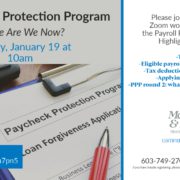New Accounting Standard for Leases – FASB ASC 842
FASB issued ASU 2016-02, Leases (Topic 842) in February 2016. The new lease standards impact all public and private entities that report under Generally Accepted Accounting Principles (GAAP). The new standards are already in effect but not everyone has been prepared to implement the new standards. ASU 2016-02 was effective for private companies and nonprofit organizations for fiscal years beginning after December 15, 2021. If you haven’t already implemented these changes, the time to do so is now.
New Lease Standards Do Have Some Exceptions
ASC 842 enhances transparency and comparability across organizations by incorporating lease assets and lease obligations into the balance sheet while providing essential insights into leasing agreements. The new standards apply to all leases lasting longer than 12 months, with the exception of the following:
- Leases of intangible assets
- Leases of inventory
- Leases of assets under construction
- Leases of biological assets
- Leasing for the exploration or utilization of finite natural resources, like oil, natural gas, and minerals.
From a lessee standpoint, leases are classified as either an operating lease or a finance lease. Capital leases have been replaced by finance leases. Whether you have an operating lease or a finance lease, with the new standards, you will need to record a right of use asset and right of use liability, initially measured at the present value of lease payments. The asset represents the lessee’s right to use the underlying asset and the liability represents the lessee’s financial obligation over the lease term.
Under the new lease standards, the accounting for leases from a lessor perspective remain the same for the most part –
- Sales type/direct finance:
- Derecognize underlying asset
- Recognize selling profit either immediately or over lease term
- Operating –
- Continue to recognize underlying asset as a fixed asset
- Recognize lease income over lease term, typically on a straight-line basis
Disclosure requirements under FASB ASC 842 include both qualitative and quantitative factors:
- Significant assumptions and judgements
- Allocation of consideration in a contract
- Discount rate
- General description
- Basis and terms and conditions on which variable lease payments are made
- Terms and conditions of options to extend or terminate lease
- Maturity analysis of lease liabilities
- Use of practical expedients
The improved disclosures enable financial statement users to evaluate the magnitude, schedule, and unpredictability of cash flows originating from lease transactions.










